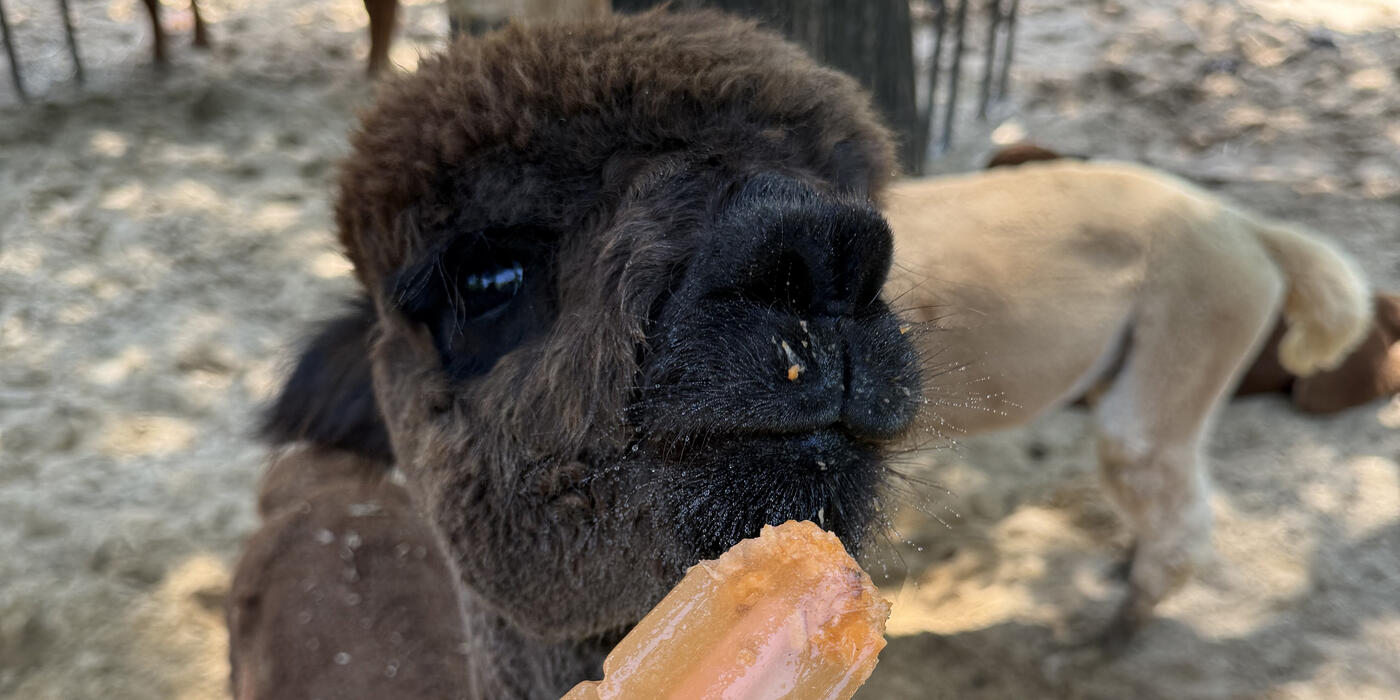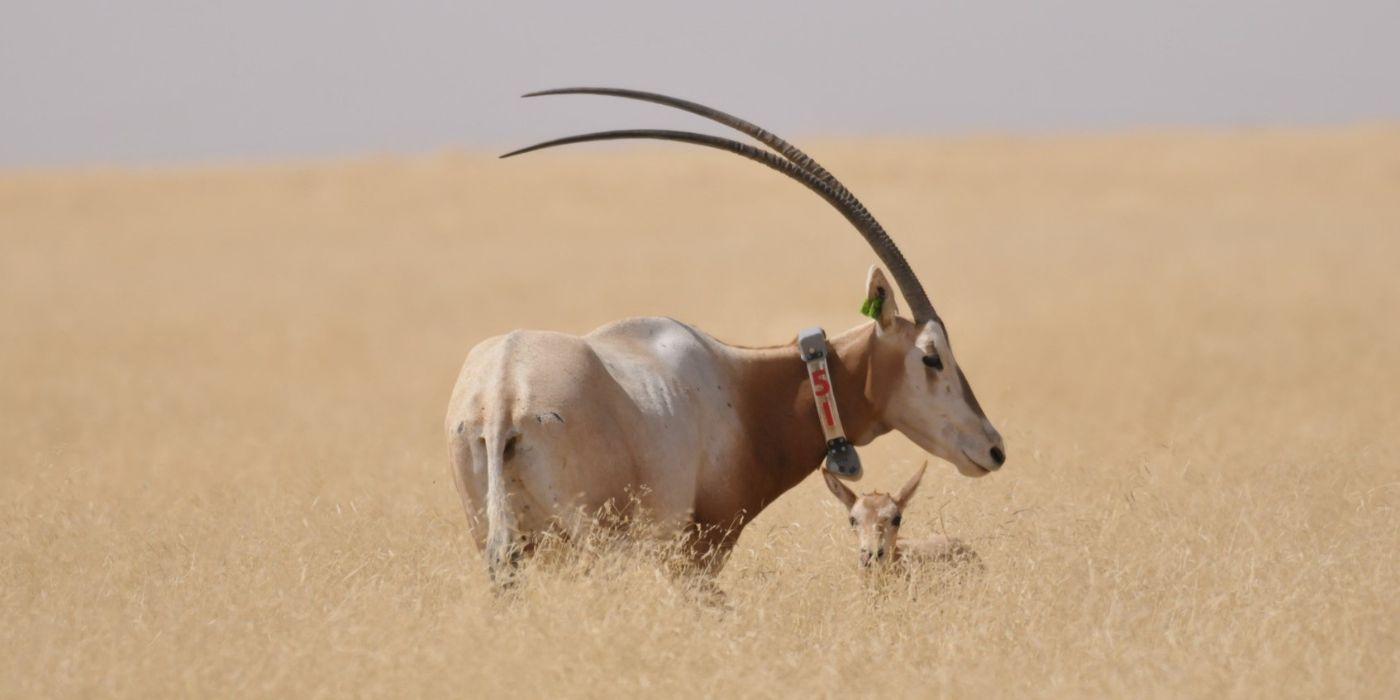Goats and Gazelles and Oryx, Oh My! How Wildlife Veterinarians Treat (Almost) All Species
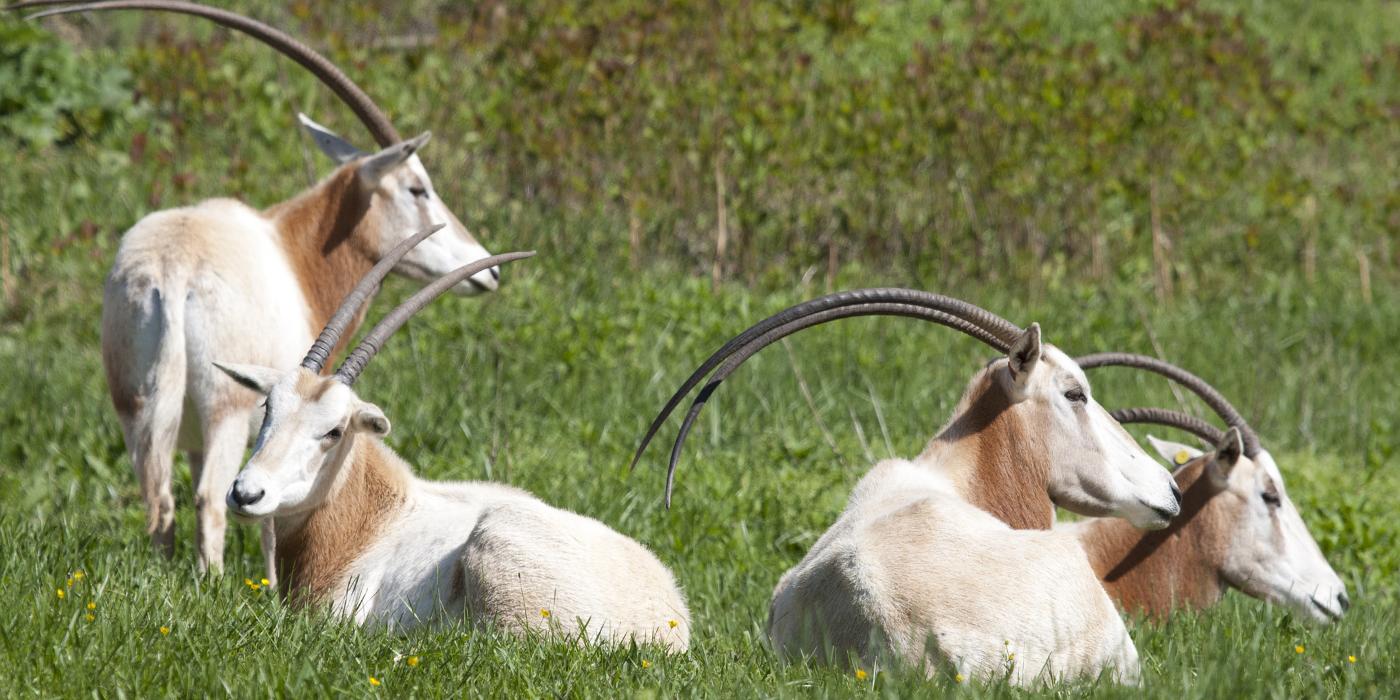
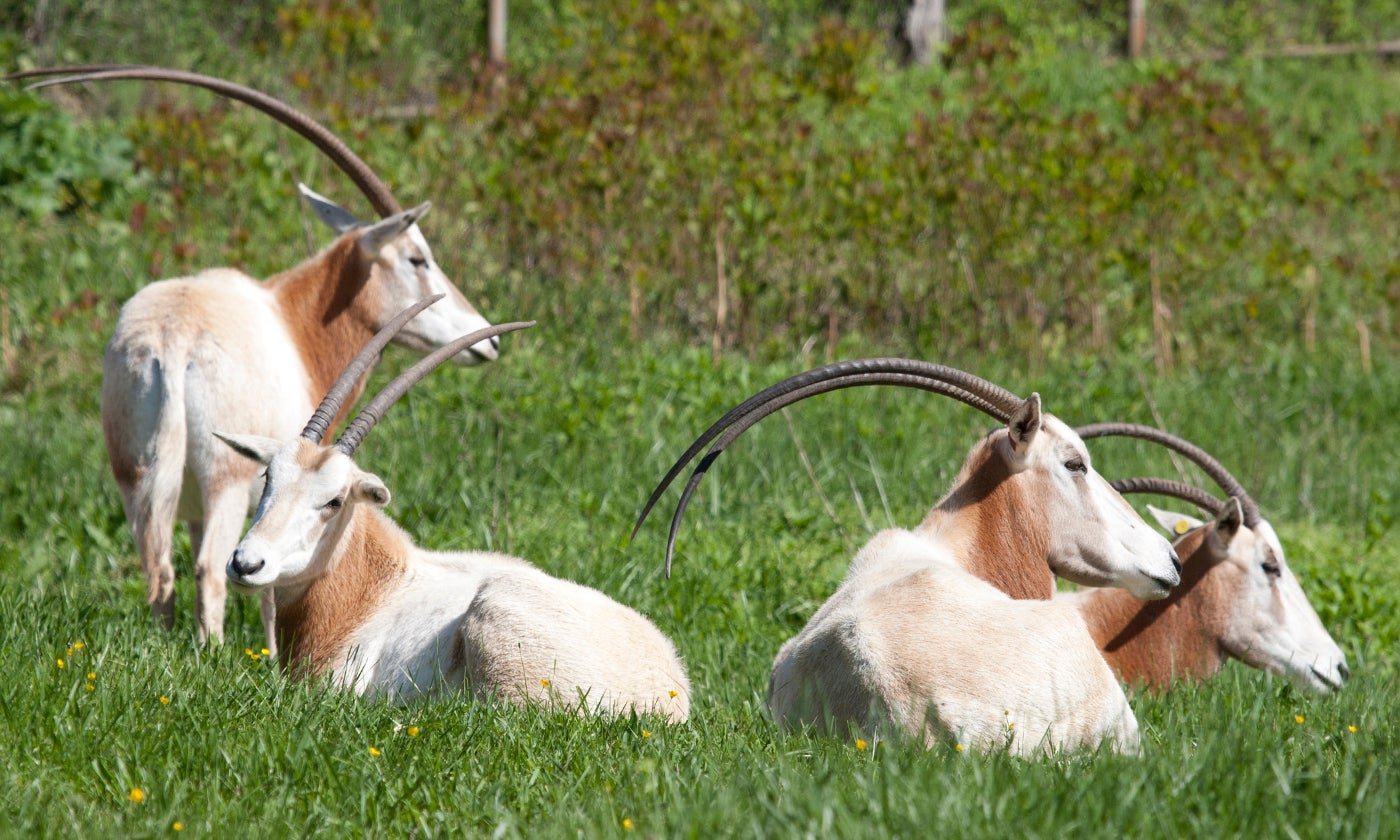
Collectively, veterinarians are trained to work with a variety of species. There are equine veterinarians who treat horses, small animal veterinarians who examine dogs and cats, and livestock veterinarians who work with cattle, goats and pigs. But for veterinarians who work in zoos or with wildlife, patients can span hundreds of different species, from feathery to scaly to furry and everything in between.
Each species has unique needs and health issues. And each varies widely in anatomy, physiology and medication effectiveness. Have you ever wondered how zoo veterinarians manage to treat so many different kinds of animals? And how they work with animals that are endangered and exceedingly rare?
Such is the case for the scimitar-horned oryx (Oryx dammah), a large antelope once native to dry environments of North Africa. In 2000, oryx became extinct in the wild, wiped out by decades of hunting, habitat loss and competition with livestock. The good news is that the Smithsonian Conservation Biology Institute’s Conservation Ecology Center has been participating in an ambitious reintroduction of oryx in Chad.
This project, led by the Environment Agency - Abu Dhabi, the government of Chad, and the Sahara Conservation Fund, culminated in the first release of oryx back into the wild in 2016. Since then, a small wild population has been established in Chad’s Ouadi Rimé-Ouadi Achim Faunal Reserve. But how do wildlife veterinarians know how to care for wildlife like oryx?
With such a small wild population of scimitar-horned oryx, understanding their common health issues, their medical needs and how to treat them can be challenging. This is where zoos come into play as a critical resource for research and building knowledge. While there are few scimitar-horned oryx in the wild, a much larger population lives in zoos and animal parks, where they receive regular veterinary attention. What we learn from oryx housed under human care can also be applied to their free-ranging relatives!
In addition, veterinarians who treat exotic species often have to adapt information from more common, closely related animals to rarer species like the oryx. Oryx are antelopes, so they are closely related to other even-toed ungulates (or hoofed mammals). They also have a similar anatomy to other ruminants, which are herbivorous hoofed mammals that have specialized stomachs to process their plant-based diets. You can think of a cow as the classic example!
Using our understanding of the shared evolutionary relationships between species, we can make educated guesses about their common medical problems, their health needs, and appropriate drug dosages and treatment methods. Can you think of any well-known hoofed animals at the Smithsonian’s National Zoo that might stand in for oryx? Hint: they live at the Kids’ Farm exhibit!
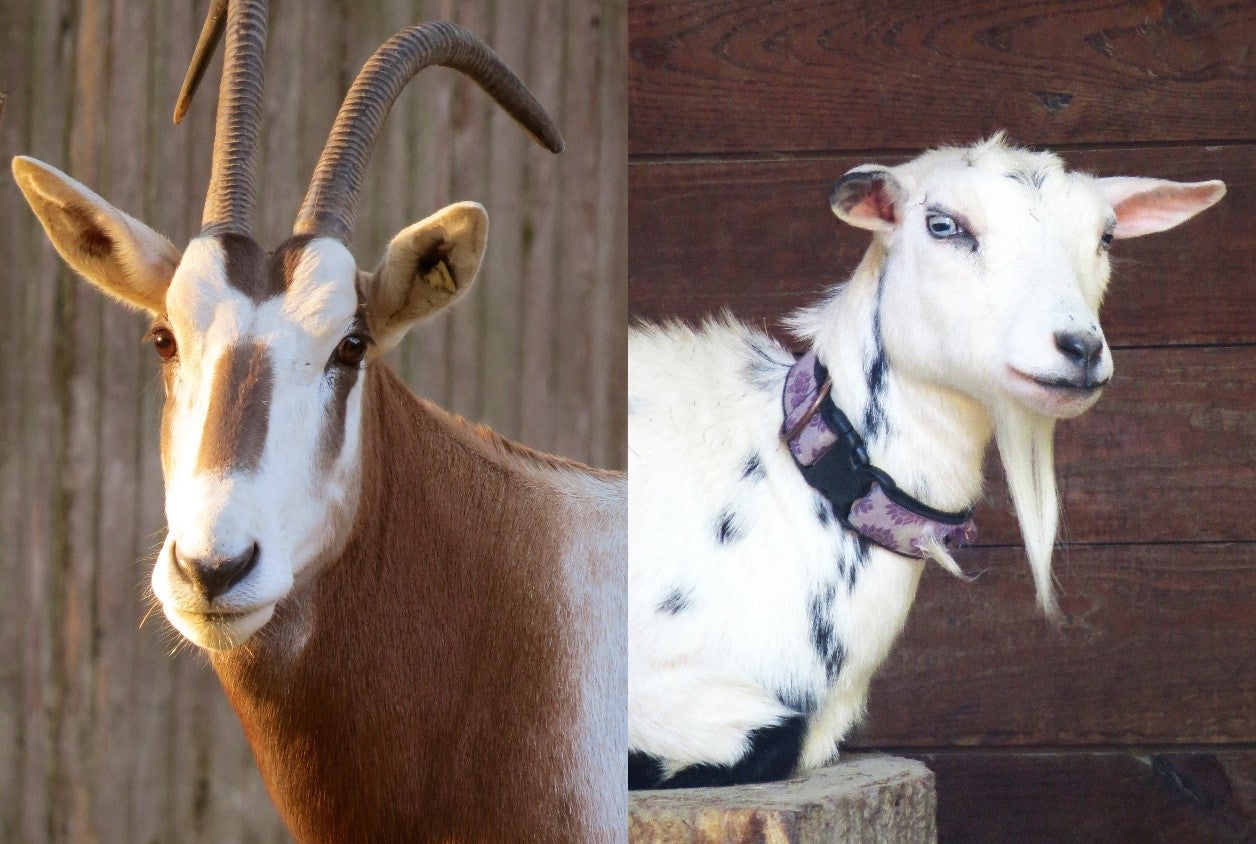
Can you see the family resemblance? Goats and oryx are both in the family Bovidae!
Yes, goats can be an important learning tool when it comes to oryx health! In July, the Global Health Program’s Dr. Dawn Zimmerman traveled to the oryx release site in Chad to support the reintroduction project. To better address health needs for reintroduced oryx and investigate diseases that could threaten the small wild population, Dr. Zimmerman held an oryx health and pathology workshop.
Because wild oryx are still critically endangered, there are ethical concerns and logistical obstacles for veterinarians practicing on this rare species. Instead, the workshop substituted goats for this learning opportunity. By using goats as a model for oryx, Dr. Zimmerman provided hands-on training in ruminant anatomy and how to spot signs of disease.

Participants in the anatomy and pathology training workshop.
Training workshops like this one can build local capacity to identify causes of animal deaths and recognize disease outbreaks. The knowledge gained from this training can also be applied to related species in the region that are similarly rare, such as the critically endangered addax (Addax nasomaculatus) and dama gazelle (Nanger dama).
The workshop also trained students in the safest ways to conduct a wildlife disease investigation. Because some of the diseases that affect ruminants can affect people too (“zoonotic diseases”), this knowledge increases public health security. As the scimitar-horned oryx reintroduction project continues to expand, this training workshop helps ensure that the newly wild oryx population remains resilient in the face of disease.
The Scimitar-horned Oryx Reintroduction Program in Chad is a joint initiative of the Government of Chad and the Environment Agency - Abu Dhabi. Led by the Environment Agency – Abu Dhabi, on-the-ground implementation of the program is carried out by the Sahara Conservation Fund.

